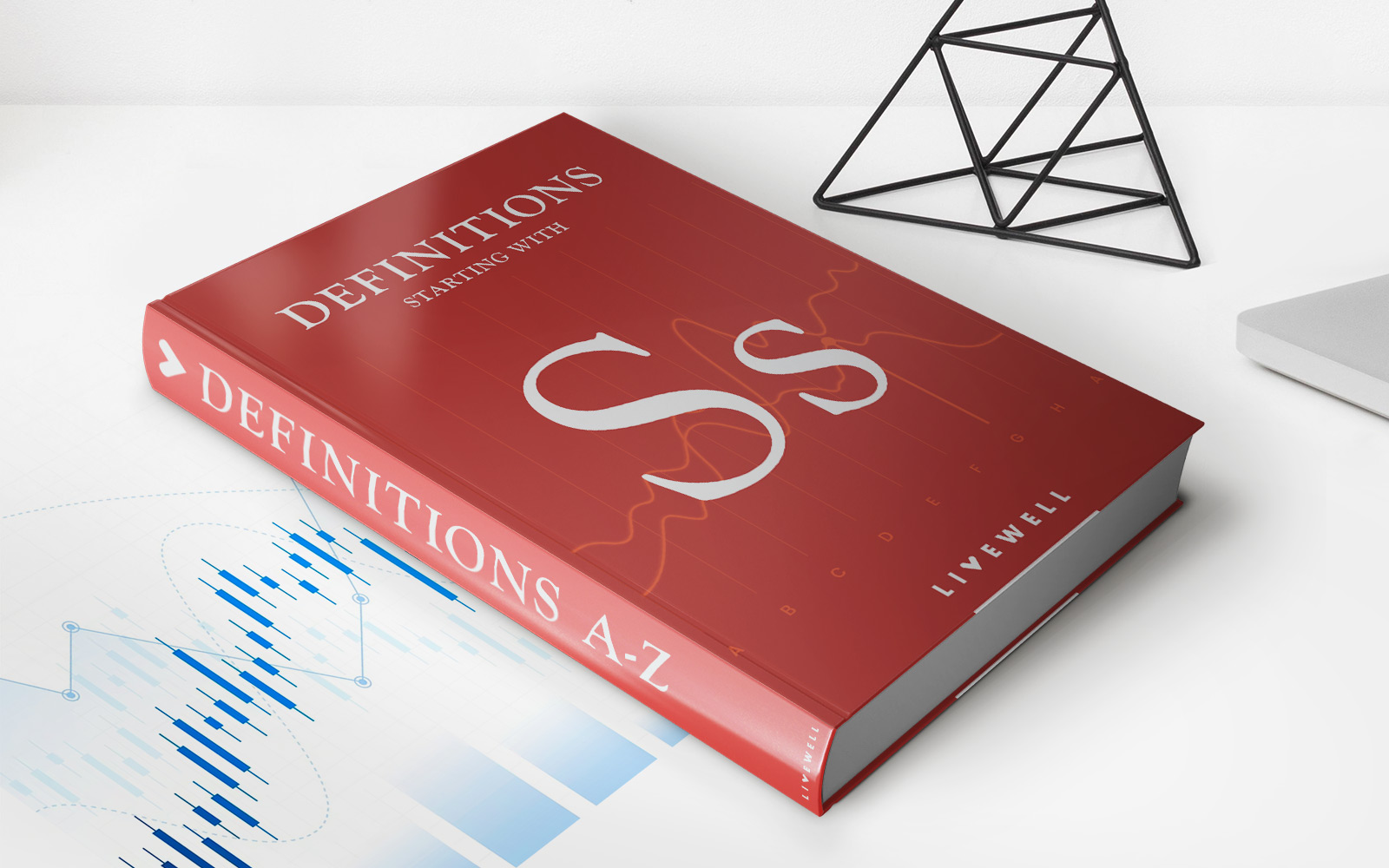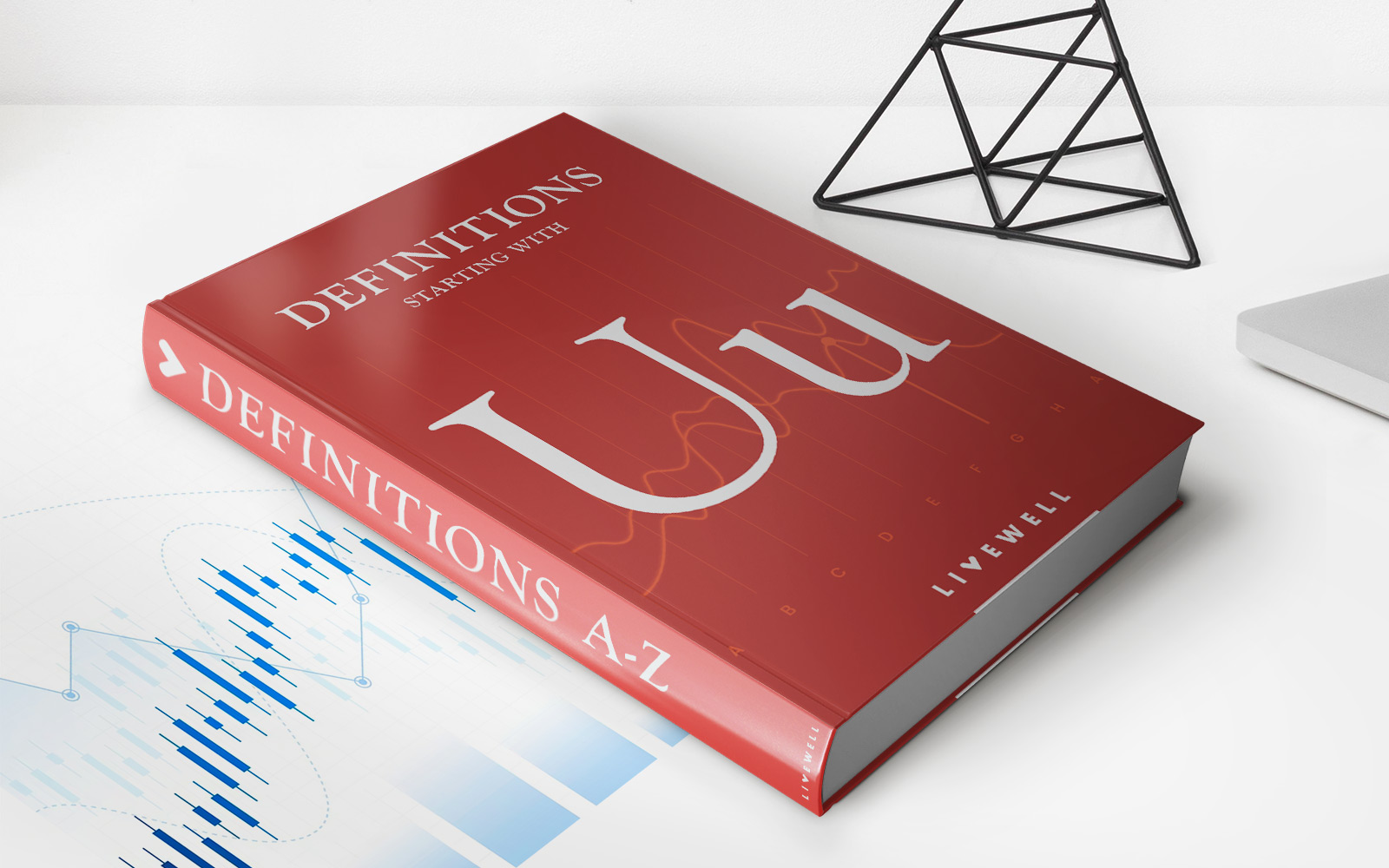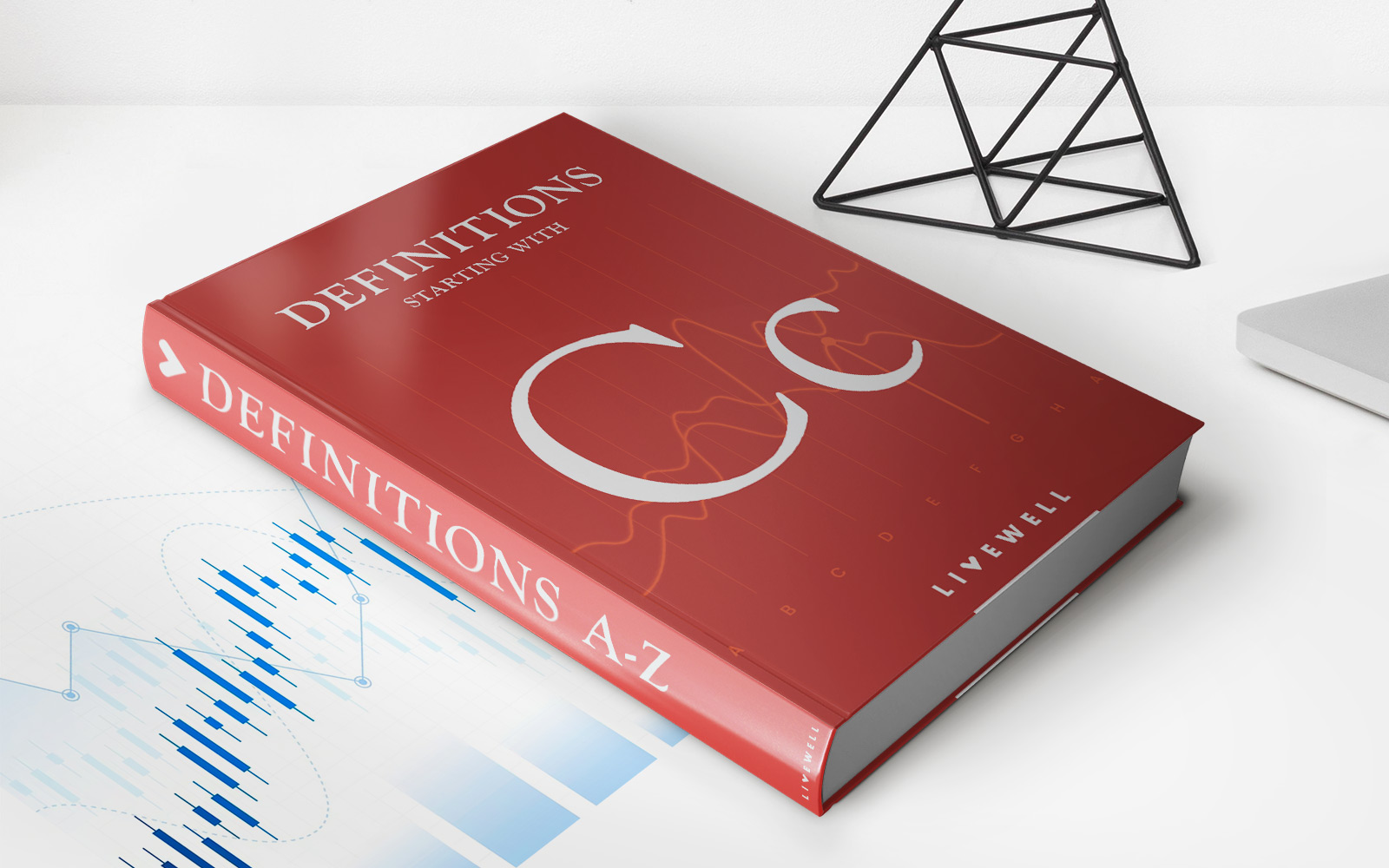

Finance
What Is A Unit Of Life Insurance?
Published: October 16, 2023
Learn the basics of life insurance with our comprehensive guide. Understand what a unit of life insurance means and how it can benefit your financial stability.
(Many of the links in this article redirect to a specific reviewed product. Your purchase of these products through affiliate links helps to generate commission for LiveWell, at no extra cost. Learn more)
Table of Contents
- Introduction
- Definition of Life Insurance
- Understanding Units of Life Insurance
- Importance of Units in Life Insurance Coverage
- Determining the Value of Units in Life Insurance
- Calculation of Premiums Based on Units
- Benefits and Features of Unit-Based Life Insurance
- Types of Life Insurance Policies Using Units
- Factors to Consider When Choosing Units in Life Insurance
- Pros and Cons of Unit-Based Life Insurance
- Conclusion
Introduction
Life insurance is a vital financial tool that provides financial protection to individuals and their loved ones in the event of death. It offers a way to secure the financial future of family members and cover expenses such as mortgages, debts, educational costs, and daily living expenses. A unit of life insurance is a key concept in life insurance coverage, offering policyholders a flexible and customizable approach to their insurance needs.
Understanding the concept of units in life insurance is crucial for policyholders, as it enables them to determine the amount of coverage they require and the premium they will pay. This article aims to provide a comprehensive overview of units in life insurance, helping readers grasp the intricacies of this important aspect of insurance coverage.
Throughout this article, we will explore the definition of life insurance and delve into the concept of units, covering their importance, calculation, and how they affect premiums. We will also discuss the benefits and features of unit-based life insurance policies, the different types available, and the factors to consider when choosing units for coverage. Lastly, we will examine the pros and cons of unit-based life insurance to help readers make informed decisions regarding their life insurance needs.
By the end of this article, readers will have a solid understanding of units in life insurance and be better equipped to navigate the world of life insurance, ensuring they make informed choices that align with their financial goals and individual circumstances.
Definition of Life Insurance
Life insurance is a contractual agreement between an individual (the policyholder) and an insurance company. It provides a financial safety net to the policyholder’s beneficiaries, typically family members, in the event of the policyholder’s death. In exchange for regular premium payments, the insurance company promises to pay out a predetermined sum of money, known as the death benefit, to the designated beneficiaries upon the death of the policyholder.
The primary goal of life insurance is to provide financial protection and support to the policyholder’s loved ones after their passing. It helps ensure that dependents can maintain their standard of living, cover immediate expenses, pay off debts, and meet ongoing financial obligations without facing undue hardship. Life insurance can also serve as a means of estate planning, providing an inheritance to beneficiaries or serving as a tool for charitable giving.
Life insurance policies can be categorized into two main types: term life insurance and permanent life insurance. Term life insurance covers the policyholder for a specified period, typically 10, 20, or 30 years, while permanent life insurance provides coverage for the entire lifetime of the insured individual. Within these broad categories, there are various subtypes and options available, each offering different features, benefits, and premium structures.
Life insurance policies typically require the policyholder to undergo a medical examination or answer health-related questions to assess their insurability. The premiums are then determined based on various factors such as age, health, lifestyle, occupation, and the desired amount of coverage.
It’s important to note that life insurance does not cover all causes of death. There are certain exclusions specified in the policy, such as suicide within a certain period of policy inception. It is essential to carefully review the policy terms, conditions, and exclusions to fully understand the coverage provided.
Now that we have a clear understanding of what life insurance entails, let’s explore the concept of units in life insurance and how they impact the coverage and premiums.
Understanding Units of Life Insurance
In the realm of life insurance, units refer to a method of determining the value and coverage amount of a policy. Instead of directly specifying a fixed amount for the death benefit, insurance companies use units to provide a more flexible and customizable approach to coverage. This allows policyholders to adjust their coverage based on their individual needs, ensuring the policy aligns with their financial goals.
Each unit represents a certain amount of coverage, and the policyholder has the flexibility to choose the number of units they wish to purchase. The total coverage amount is then calculated by multiplying the number of units by the value assigned to each unit. This value is determined by the insurance company and is typically based on factors such as age, health, and the desired level of coverage.
The use of units provides policyholders with the ability to easily increase or decrease their coverage amount as their financial situation changes. For example, if a policyholder’s financial responsibilities increase due to the birth of a child or the purchase of a new home, they can easily purchase additional units to accommodate the change. Conversely, if their financial obligations decrease, they can reduce the number of units to reflect their new circumstances.
By utilizing units, life insurance policies become more adaptable and responsive to the evolving needs of policyholders. Since units can be adjusted without the need to cancel and rewrite the policy, policyholders can make changes without significant administrative hurdles or incurring additional fees.
It’s important to note that the value of units may change over time, especially in certain types of life insurance policies. For example, in variable life insurance, the value of units is tied to the performance of investment funds chosen by the policyholder. If the investments perform well, the value of the units may increase, potentially leading to a higher death benefit. Conversely, poor investment performance may result in a decrease in the value of units and a lower death benefit.
Now that we have a foundational understanding of units in life insurance, let’s explore why they are important in determining the coverage and how they impact the premiums.
Importance of Units in Life Insurance Coverage
Units play a crucial role in determining the coverage amount and flexibility of a life insurance policy. Understanding the importance of units can help policyholders make informed decisions about their coverage needs and ensure they have adequate protection for their loved ones. Here are some key reasons why units are important in life insurance coverage:
Customizable Coverage: Units provide policyholders with the ability to customize their coverage amount based on their specific financial needs. By allowing policyholders to choose the number of units, they can tailor their policy to align with their unique circumstances. This flexibility ensures that the policy can adapt to changes in financial obligations, such as the birth of a child, a change in income, or the purchase of a home.
Scalability: Units make it easy to scale up or down the coverage amount as needed. Policyholders can increase their coverage by purchasing additional units, providing added protection for their beneficiaries. Conversely, policyholders can reduce their coverage by decreasing the number of units, which may be beneficial if their financial responsibilities decrease or they want to lower their premiums.
Affordability: Units allow policyholders to adjust their coverage amount to fit within their budget. By having the option to purchase a specific number of units, policyholders can strike a balance between the desired coverage amount and the affordability of premiums.
Flexibility: Units offer flexibility in policy management. Policyholders can make changes to the coverage amount without cancelling the entire policy. This is particularly advantageous if the policyholder experiences major life events or financial shifts and needs to modify their coverage accordingly. With units, policyholders can easily adapt their coverage to meet evolving needs.
Adaptability: Life insurance should reflect one’s changing circumstances over time. Units provide the flexibility to adjust a policy’s coverage amount as needed, ensuring that the policy remains relevant and provides adequate protection throughout different life stages. This adaptability is particularly beneficial in long-term life insurance policies where coverage needs may change over several decades.
Transparency: Units offer transparency in understanding the value of coverage provided by the policy. Each unit represents a specific amount of coverage, making it easier for policyholders to comprehend the extent of their protection. This transparency aids in comparing different policies and choosing the one that best suits their needs.
By recognizing the importance of units in life insurance coverage, policyholders can make informed decisions about the coverage amount and structure of their policies. This allows them to ensure that their loved ones are adequately protected in the face of life’s uncertainties.
Determining the Value of Units in Life Insurance
When it comes to life insurance, the value of units is a key aspect that policyholders need to understand. The value of units is determined by the insurance company and is typically based on several factors, including the age and health of the insured individual, the desired coverage amount, and the type of life insurance policy.
Insurance companies assign a specific value to each unit, which represents a certain amount of coverage. For example, if the value of a unit is $1,000 and a policyholder purchases 10 units, their total coverage amount would be $10,000. The value of units may vary among different insurance providers and can also differ based on the specific policy and its terms and conditions.
Insurance companies consider various risk factors when determining the value of units. Age is an essential factor, as older individuals typically pose a higher mortality risk. Therefore, the older the insured individual, the higher the value assigned to each unit to provide the necessary coverage.
Health plays a significant role in determining the value of units as well. The insurance company assesses the applicant’s health status through medical examinations or health questionnaires. A person in good health is likely to receive a lower value per unit compared to someone with pre-existing medical conditions or poor health.
The desired coverage amount is another factor that influences the value of units. Generally, purchasing a higher coverage amount will result in a higher value per unit. As the coverage amount increases, the insurance company assumes greater risk and adjusts the value of units accordingly.
The type of life insurance policy also affects the value of units. For example, in term life insurance, where coverage is provided for a specific period, the value of units remains constant throughout the policy term. However, in permanent life insurance, such as whole life or universal life insurance, the value of units can fluctuate due to the policy’s investment component. If the policy includes an investment component, the value of units may vary depending on the performance of the underlying investments.
It’s important for policyholders to carefully review and understand how the value of units is determined in their specific life insurance policy. Consulting with an insurance professional or financial advisor can help clarify any confusion and ensure that policyholders are making informed decisions.
By understanding how the value of units is determined, policyholders can better assess the affordability and suitability of the coverage offered by their life insurance policies. This knowledge empowers individuals to make informed choices that align with their financial goals and provide the necessary protection for their loved ones.
Calculation of Premiums Based on Units
The premium, or the cost of life insurance coverage, is calculated based on various factors, including the number of units chosen by the policyholder. Understanding how premiums are calculated based on units is important for policyholders to determine the affordability of coverage and budget accordingly.
Insurance companies utilize a specific formula to calculate premiums based on units. The premium amount is determined by multiplying the number of units selected by the value assigned to each unit. For example, if the value of a unit is $100 and a policyholder purchases 5 units, the premium would be $500.
In addition to the value of units, insurance companies consider other factors when determining the premium amount. These factors may include the age, gender, health condition, occupation, and lifestyle habits of the insured individual. The higher the perceived risk associated with the policyholder, the higher the premium may be.
Insurance companies use actuarial analysis and statistical data to assess the risk level associated with each policyholder. This enables them to set premium rates that accurately reflect the expected mortality risk and potential payout of the policy.
Furthermore, the type of life insurance policy chosen by the policyholder also influences the calculation of premiums. Term life insurance policies typically have lower premiums compared to permanent life insurance policies. This is because term life insurance provides coverage for a specific term, whereas permanent life insurance offers coverage for the entire lifetime of the insured individual.
It’s important for policyholders to keep in mind that premiums based on units may change over time. Some life insurance policies have a level premium structure, where the premium remains the same throughout the policy term. However, in other cases, insurance companies may implement premium adjustments based on factors such as the insured individual’s age or changes in health status.
Policyholders should carefully review the premium structure outlined in their policy documents to understand how their premiums may change over time. Additionally, it’s crucial to consider the affordability of premiums when choosing the number of units and determining the coverage amount. Striking a balance between the desired coverage and the ability to pay the premiums is important to ensure that the policy remains sustainable in the long run.
By understanding how premiums are calculated based on units, policyholders can make informed decisions about their life insurance coverage and budget wisely for the protection of their loved ones.
Benefits and Features of Unit-Based Life Insurance
Unit-based life insurance policies offer several benefits and features that make them a popular choice among policyholders. Understanding these advantages can help individuals make informed decisions when selecting a life insurance policy. Here are some of the key benefits and features of unit-based life insurance:
Flexibility: One of the primary advantages of unit-based life insurance is its flexibility. The use of units allows policyholders to customize their coverage amount to suit their individual needs. Whether they require a higher or lower coverage amount, units provide the flexibility to adjust the policy as their circumstances change over time.
Customizable Premiums: With unit-based life insurance, policyholders have the ability to adjust their premiums based on the number of units they choose. This allows individuals to align their coverage with their budget and financial goals. By selecting the appropriate number of units, policyholders can strike a balance between the desired coverage and the affordability of premiums.
Adaptable Coverage: Unit-based life insurance provides coverage that can be adapted to the policyholder’s changing needs. Life events like getting married, having children, or purchasing a new home can impact an individual’s insurance requirements. With units, policyholders can easily increase or decrease their coverage to accommodate these changes, without the need to cancel and rewrite the policy.
Cash Value Accumulation: In certain types of unit-based life insurance, such as universal life or variable universal life insurance, a portion of the premium paid by the policyholder goes toward a cash value component. This cash value grows over time based on investment performance or a predetermined interest rate. Policyholders can access these accumulated funds through loans or withdrawals, providing a potential source of additional financial flexibility.
Death Benefit: Unit-based life insurance provides a death benefit to the policyholder’s beneficiaries upon their passing. The death benefit is calculated based on the number of units and their respective values. This lump sum payment can offer financial security to beneficiaries, helping them cover immediate expenses, pay off debts, and meet long-term financial obligations.
Transparency: Unit-based life insurance offers transparency in understanding the coverage provided. Each unit represents a specific amount of coverage, making it easier for policyholders to assess the extent of their protection. This transparency can help policyholders compare different policies and choose the one that best suits their needs.
Tax Advantages: Depending on the jurisdiction, unit-based life insurance policies may offer tax advantages. For example, some policies may provide tax-deferred growth of the cash value component, and the death benefit is often tax-free for the beneficiaries. It’s important to consult with a tax advisor to understand the specific tax implications of a unit-based life insurance policy in your jurisdiction.
By understanding the benefits and features of unit-based life insurance, policyholders can select a policy that suits their individual needs and provides the desired flexibility, coverage, and financial protection for their loved ones.
Types of Life Insurance Policies Using Units
Unit-based life insurance is a versatile concept that can be applied to various types of life insurance policies. These policies offer different features and benefits, allowing individuals to choose the one that aligns with their specific needs and financial goals. Here are some common types of life insurance policies that utilize units:
Term Life Insurance: Term life insurance provides coverage for a specific period, such as 10, 20, or 30 years. With unit-based term life insurance, policyholders can choose the number of units based on their desired coverage amount for the specified term. The premium payment remains level throughout the term, providing a straightforward and affordable option for individuals seeking temporary coverage.
Whole Life Insurance: Whole life insurance is a type of permanent life insurance that offers coverage for the entire lifetime of the insured individual. It accumulates cash value over time, and the policyholder may receive dividends based on the performance of the insurance company’s investment portfolio. Unit-based whole life insurance allows policyholders to determine the coverage amount by selecting the desired number of units, with premiums that remain level throughout the policy’s duration.
Universal Life Insurance: Universal life insurance combines a death benefit with a cash value component that earns interest or is linked to the performance of investment options. With unit-based universal life insurance, policyholders have the flexibility to adjust the coverage amount by buying or surrendering units. This type of policy offers transparency and customization options to meet the changing needs of policyholders.
Variable Life Insurance: Variable life insurance allows policyholders to allocate their premiums to a selection of investment options, such as mutual funds or other investment vehicles. The value of units in variable life insurance fluctuates based on the performance of the underlying investments. Policyholders have the opportunity to grow the cash value component through investment growth, but they also bear the investment risk associated with market fluctuations.
Indexed Universal Life Insurance: Indexed universal life insurance policies provide a death benefit and a cash value component that is tied to the performance of a market index, such as the S&P 500. The policyholder can choose the number of units based on their coverage needs, and the cash value grows based on the performance of the selected index. This type of policy offers the potential for growth while also providing downside protection.
Each type of life insurance policy utilizing units has its own set of features, benefits, and considerations. It’s important for individuals to carefully evaluate their financial goals, risk tolerance, and long-term objectives when selecting a policy. Consulting with an insurance professional or financial advisor can help determine which type of unit-based life insurance policy aligns best with individual circumstances.
By understanding the different types of life insurance policies using units, individuals can make informed decisions and choose the policy that provides the desired level of coverage, flexibility, and potential for financial growth.
Factors to Consider When Choosing Units in Life Insurance
When selecting a life insurance policy using units, there are several important factors to consider. Making the right choices regarding the number of units can provide policyholders with the desired level of coverage and ensure that the policy fits their individual needs. Here are some key factors to consider when choosing units in life insurance:
Financial Goals: Determine your financial goals and objectives for purchasing life insurance. Consider the specific needs you want the policy to fulfill, such as covering mortgage payments, educational expenses, or providing a financial safety net for your loved ones in the event of your passing. Understanding your financial goals will help you assess the necessary coverage amount and determine the number of units needed.
Current and Future Financial Obligations: Evaluate your current and anticipated future financial obligations. Take into account factors such as outstanding debts, ongoing expenses, and the financial responsibilities you have towards your dependents. This assessment will help you gauge the appropriate coverage amount and the number of units required to adequately protect your loved ones and provide for their financial needs.
Budget: Consider your budget and determine the amount you can comfortably allocate towards life insurance premiums. Analyze your monthly cash flow and ensure that the premiums correspond to a payment amount that fits within your financial capacity. Choosing the number of units based on your budget will help you strike a balance between the desired coverage and affordability.
Future Flexibility: Anticipate any changes in your life circumstances that may impact your life insurance needs. Factors such as marriage, having children, buying a house, or starting a business can significantly influence your coverage requirements. Choose a policy that allows you to adjust the number of units over time to accommodate these life changes without the need to purchase a new policy.
Tax Implications: Consider the tax implications associated with life insurance. Depending on your jurisdiction, the death benefit and cash value accumulation within a life insurance policy may have tax advantages. Research and understand the tax laws applicable to your situation to ensure you make informed decisions regarding the number of units and the overall structure of your policy.
Risk Tolerance: Assess your risk tolerance and investment preferences. Certain types of life insurance policies, such as variable or indexed universal life, allow policyholders to allocate their premiums to investment options. These policies offer the potential for higher returns, but they also come with higher risk due to exposure to market fluctuations. Evaluate your risk tolerance carefully to determine if such policies align with your investment preferences and financial goals.
Consultation and Professional Advice: Seek guidance from insurance professionals or financial advisors who can provide personalized advice based on your specific needs and circumstances. These experts can analyze your financial situation, evaluate your insurance requirements, and help you choose the appropriate number of units to achieve your goals. Their expertise can help ensure that you make well-informed decisions regarding your life insurance coverage.
By considering these factors when choosing units in a life insurance policy, individuals can select the appropriate coverage amount, align their policy with their financial goals, and provide security for their loved ones in the face of life’s uncertainties.
Pros and Cons of Unit-Based Life Insurance
Unit-based life insurance offers several advantages and considerations that individuals should weigh before making a decision. Understanding the pros and cons of unit-based life insurance can help individuals make informed choices regarding their coverage. Here are the key pros and cons to consider when evaluating unit-based life insurance:
Pros:
Flexibility: Unit-based life insurance provides policyholders with flexibility in adjusting their coverage amount as their financial circumstances change. This allows them to increase or decrease the number of units to align with their evolving needs, such as incurring new financial obligations or experiencing a change in income.
Customization: By selecting the number of units, policyholders can customize their coverage to match their specific financial goals and requirements. This ensures that the policy provides the desired level of protection for their loved ones and addresses their unique circumstances.
Adaptability: Unit-based life insurance allows policyholders to adapt their coverage throughout different life stages. Whether it’s the birth of a child, the purchase of a home, or retirement planning, individuals can easily adjust their coverage to meet their changing needs without the need to cancel and rewrite the policy.
Transparency: The use of units in life insurance policies provides transparency, as each unit represents a specific amount of coverage. This transparency makes it easier for policyholders to understand the extent of their protection and compare different policies to make an informed decision.
Potential Cash Value Accumulation: In certain types of unit-based life insurance, such as universal life or variable universal life insurance, a portion of the premium goes towards a cash value component. This accumulation can provide policyholders with potential future financial flexibility, as they can access these funds through loans or withdrawals.
Cons:
Complexity: Unit-based life insurance policies can be more complex to understand compared to simple term life insurance policies. The incorporation of units and potential cash value accumulation adds another layer of complexity, requiring individuals to thoroughly review policy details and understand the implications.
Potential Investment Risk: In policies where the cash value component is subject to investment performance, such as variable life insurance, there is an inherent risk involved. Poor investment performance can result in a decrease in the value of units and impact the cash value of the policy.
Higher Premiums: Depending on the coverage amount and the value assigned to each unit, unit-based life insurance policies may result in higher premiums compared to simpler term life insurance policies. It’s important for individuals to carefully assess their budget and ensure they can comfortably afford the premiums associated with the selected number of units.
Administrative Complexity: Adjusting the coverage amount by adding or subtracting units requires administrative processes, such as policy amendments or endorsements. While this provides flexibility to policyholders, it adds complexity and potential administrative fees.
Tax Considerations: The tax implications of unit-based life insurance can vary depending on the jurisdiction and the specific policy. Individuals should consult with tax professionals to understand the tax treatment of premiums, death benefits, and potential cash value accumulation to effectively plan for their financial future.
Considering the pros and cons of unit-based life insurance allows individuals to evaluate the benefits and drawbacks in relation to their unique circumstances. This knowledge empowers them to make informed decisions that best align with their financial goals and preferences.
Conclusion
Unit-based life insurance is a versatile and customizable approach to life insurance coverage. By understanding the concept of units and considering factors such as financial goals, budget, and flexibility, individuals can make informed decisions about the coverage amount and structure of their policies.
The use of units in life insurance offers several benefits, including flexibility, adaptability, and transparency. Policyholders have the ability to customize their coverage amount, easily adjust their policies as financial circumstances change, and gain a clear understanding of the extent of their protection.
However, it’s important to consider the potential complexities and drawbacks of unit-based life insurance. Policies with investment components may carry investment risk, and the administration process for adjusting coverage amounts can add complexity and potential fees.
In conclusion, unit-based life insurance provides individuals with a flexible and customizable approach to meet their unique life insurance needs. By carefully assessing their financial goals, budget, risk tolerance, and long-term objectives, individuals can select the appropriate coverage amount and number of units to secure the financial future of their loved ones.
Consulting with insurance professionals or financial advisors can further assist in navigating the complexities of unit-based life insurance and ensure that policyholders make well-informed decisions to protect their loved ones and achieve their financial goals.














